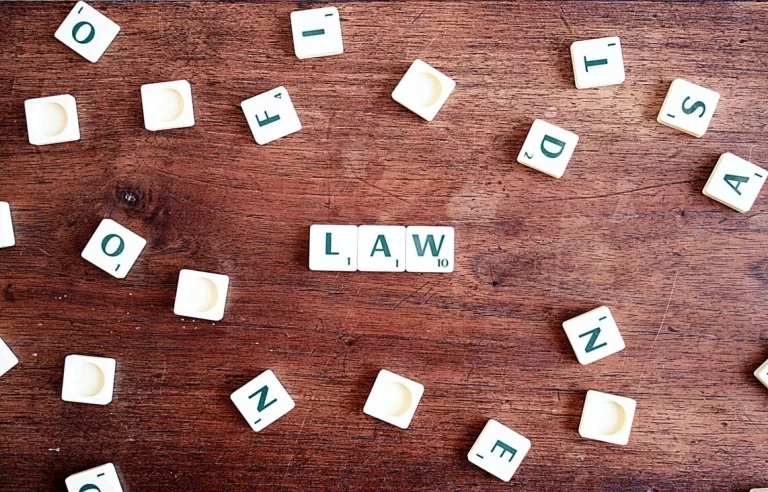Speakers – Gregory Spektor & Michael Levitis
Michael Levitis 00:00
Hey everybody, this is Michael Levitis. And I’m here with Gregory Spektor, a New York Personal Injury Attorney, who is a participating attorney in Jurisq.com. Gregory, welcome back. At our last session, we talked about thresholds, what you have to prove what you have to show to the to the insurance company to get paid if you get injured in a car accident, and we talked about serious injuries, it has to be serious, it has to be, I believe, for 90 days, you got to show proof that you’re somehow affected.
Let’s talk more about it. Let’s talk about what is serious injury. And also we hear all the time you will talk about a herniated disc, I get paid for herniated disk or got paid for fracture. Can you please tell us what they are? What is the difference? And what can you expect when filing a claim for such an injury?
Gregory Spektor 01:05
All right. Thank you for having me. Thank you. Okay. Now, what’s a serious injury? Listen, I think it’s easy to define. And when it’s not you, everybody has their own understanding or their own definition of serious injury. The state of New York, however, I think they did in the late 90s or early 2000s, they decided to actually define, okay, and they come up with a pretty narrow definition of what constitutes a serious injury.
And they did this exchange of putting together what’s called a no fault law. And that is basically that every car insurance sold in the state of New York must have protection for medical treatment, no matter whose fault it is. That’s why are they correct? Right? We’re not talking about that we’re talking about the treshold a definition of serious injuries in the state of New York.
And instead of me going by my I’m gonna just read you what that loss states and it stayed that there’s a specific section of CPLR 51 O2 D that defines what constitutes a serious injuries therapy or and here is the definition that dismemberment, severe disfigurement, fractured bones, loss of fears, permanent loss of use of body organ member function or a system, permanent consequential limitation of use of body organ or member, okay significant limitation of use of body function or system or medically determined injury or impairment or a non permanent nature, which prevents the injured person from performing performing substantially.
All of the material acts which constitute such persons usual and customary daily activity for non less than 90 days during the first 180 days immediately following liaison. Okay, I see. Now let’s the last one sounds complicated. Let me just speak in plain English, that means the doctor, the doctor tells you, you have to stay home for three months and cannot go to work.
One example. Let’s say you go that’s it. That’s it, you peers, the threshhold. You fractured, there is an x ray that shows that there was a fracture in your arm. That means you pierce the threshhold. Now what what does it mean to pierce the threshold? What it means is that when you present the case in front of the jury, I always treat every case as if it goes to trial, because that’s the only way you get the the actual recovery, that you’re very smart.
So if you pierce the thresholds, then what’s that then at the end of the trial, when you give the juries what’s called the verdict sheet, you don’t have to even ask, did the plaintiff pierce the threshold and if so, then go to page such and such and determine the amount you can just as that you basically tell him you have to pay, you have to pay.
Now the amount that you have to pay, that’s going to be you know, another work of art that you cannot put together. But if you prove liability, and you prove that the plaintiff peers the treshold of serious injury, then they have to be done. This particular person must be compensated for the injuries that he’s has he or she has to stay. Alright.
Michael Levitis 05:06
Gregory sorry, I’m trying to interrupt, because we hear so much about a disc injury or herniated disc. Can you briefly explain what that is and whether that qualifies as a serious injury to get paid, right?
Gregory Spektor 05:20
And it’s in itself, it does not, because it’s still into one of these categories, right? You just heard however, it because of that herniated disk. Now what it is, let’s go back to what is a herniated disc. I remember when I had a trial, and my doctor was testifying, and he wanted to explain this to the jury, the way that the jury would understand now.
And I like how he started what are this? What are this in our spine? So this in our spine, they’re not bones, they’re not, you know, meat, particularly. I like his example. He said that they’re like, they’re like cellophane pockets. field with crabmeat. Interesting. Picture that right? feature that and those are the pockets that are inserted between your vertebrae.
vertebrae are actually bones, those are the bones forming your spinal cord. Now, those discs are sort of, you know, sort of like an amortization provided for your spine, to be able to, you know, be flexible to help us walk to help us round and round, so on and so forth. So when you get into a car crash a lot of times because of the whiplash weather for your neck or for your back, some of those discs, suffer herniation What is it herniation is basically when cellophane pocket full of crabmeat get squeezed on one side, and loges on another side, see, interesting, that’s what herniation is.
And as such, it does not it does no longer provide as much of flexibility as it used to moral. Sometimes if the herniation is with impingement on a nerve, it will provide constant pain, right? Yeah, you know, and in pain, provides shooting pain, it might provide numbness, if it’s a, you know, cervical spine herniation, it’ll provide its neck radiation, he’ll provide numbness in your extremities like arms and wrists. If it’s a lower back herniation that might provide numbness in your lower extremities, such as lacks knees.
And that could be pretty debilitating now. And it’s one thing to have, you know, that pain, let’s say for a person, like me, who, whose job is really this, you know, being behind the desk, maybe going to tries. But it’s a very different thing for somebody who is physically employed, a carpenter, a construction worker.
Yeah, a lot of you know, of course, there are a lot of treatment, a lot of times they tried to fix this with physical therapy in our by doing some exercises, they’re trying to realign your back to stop pressing on that particular desk. They do. Chiropractic, they adjust your back, sometimes they do. Acupuncture, acupuncture is really just to alleviate pain from that particular nerve that might be impeached by the vertebrae is between the discs.
Michael Levitis 09:09
Great. Very good explanation what it is. I never knew exactly what it is. And you would think you are you’re a doctor the way you explain because you have to for the jury, they understand what the person is claiming.
Gregory Spektor 09:24
Absolutely. Listen, we’ve spent so much time with doctors.
Michael Levitis 09:28
Both the medical side and the legal.
Gregory Spektor 09:32
And a lot of times on trials, you’ll see doctors argue with that with each other, you know, they’ll they’ll be doctors who are treating him who claim you know who say that this is what’s the what the problem is, and that’s how I treated. A lot of times they just didn’t finish a lot of times herniations will require a surgery. And some surgeries are not as a not as intrusive Sometimes they can, they can do what’s called an arthroscopic surgery where they go, they don’t really open you up. And they go, and they use a laser to sort of sort of burn out that bulging part of the disk, I think it’s called a diskectomy.
And sometimes those surgeries are pretty invasive, they actually opened me up, and they put up a cage around the desk to support those vertebrates, that school they fusion surgery with instrumentation. And you know, now, knowing the definition of serious injury, you understand that if that herniation kept you from being able to return to work for, you know, 90 days out of the first 180 days, then you pierce that threshhold. Most of the cases that people have, where, you know, people didn’t break, anything didn’t die, right.
Thankfully, most of the cases that plaintiff’s attorney deal with, we deal with this branch of this definition that says significant limitation of body significant significant limitation of use of body working for system, you got it. This is where it comes. Now let’s say you get this surgery to your neck or your back, that created that cage that now protects that herniated discs from vertebrae he’s having to push on and now that cage will create you have that limitation, you will no longer be able to go along along the way up or down.
And that’s that’s it this, this is no longer an argument. In that case, of course, the defendants will go back to another point in this equation, this cause out and whether or not that injury was caused by this crash. And of course, they’ll say that this was pre existing, of course, that they’ll say that, you know that this is genetic, and so on and so forth. But this is just the nature of the beast that we deal with. And we know exactly how to handle each one of those.
Michael Levitis 12:22
Because that just to sum up from what you’re explaining, this is very complicated. Where an injury could be considered minor, where you will not get paid to maybe there are nuances and details that could make it where you could get paid for by the injury. That’s why it’s so important to go to an attorney that does personal injury for a living. And that’s all they do. Because they see these cases, day in day out.
Then the medical terms, they know how to read the charts, the X rays, the MRIs, and they could guide you whether or not you could recover money, not just for the heck of it. But you actually because you deserve it because you lost some function because you were prevented from doing your job and so on and so forth.
Only an attorney, like Gregory Spektor with the right experience can answer those questions for you. So we encourage you, if you have questions, if you were in a car accident, don’t do a call the number on the bottom of the screen. And Gregory Spektor and his associates and partners will be able to answer your questions and your particular situation and your particular car accident and your particular injuries. Gregory is very informative. We appreciate thank you for your time. I know you’re busy. We’ll let you go back to the work for your clients. Thank you and have a great day. Thank you everybody for listening.
Gregory Spektor 13:56
Thank you very much. Aga



